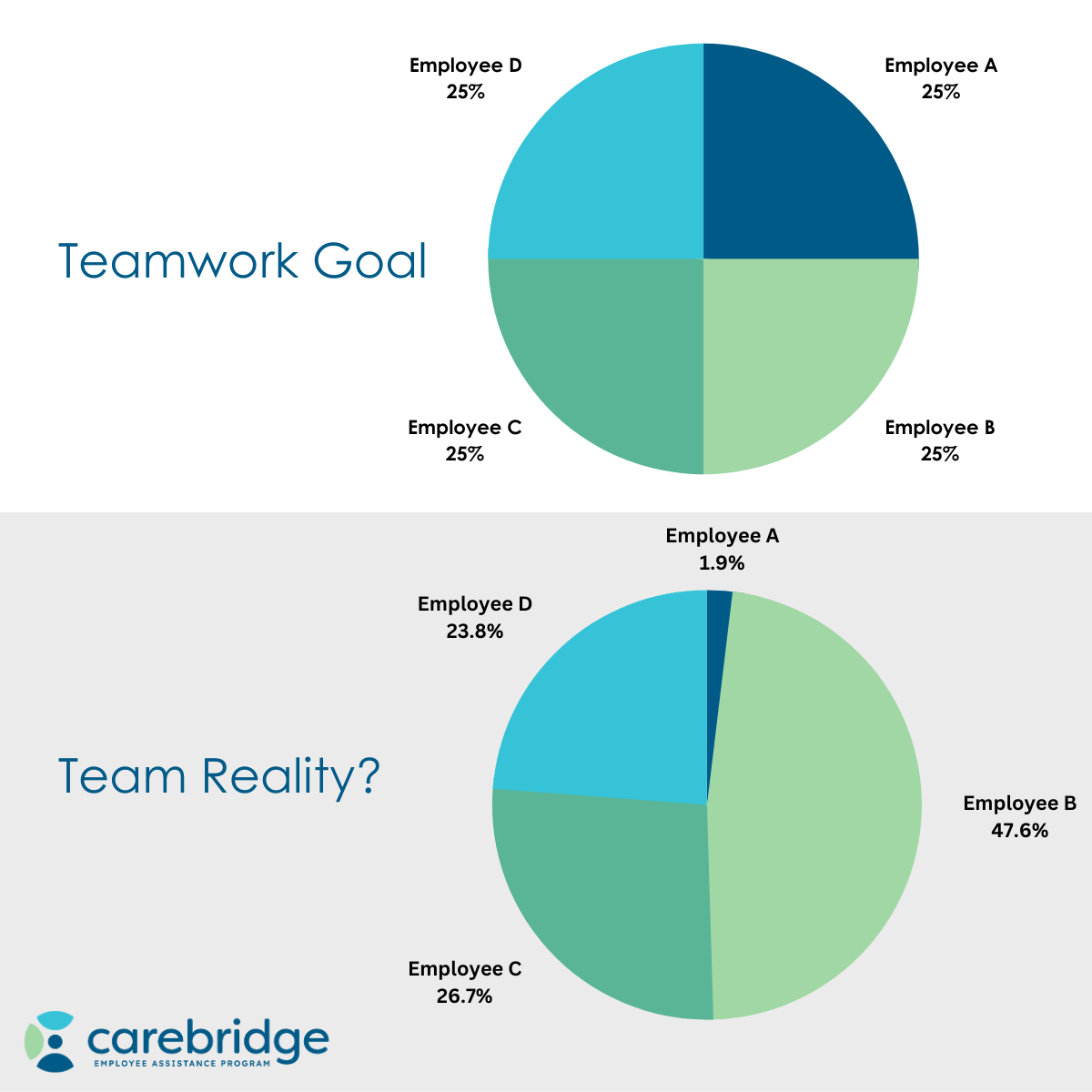Under-Performing Employees: A Barrier to a Healthy Company Culture
Under-performing employees can thwart efforts made by HR, leadership, and managers to create a mentally healthy workplace. In this article, we explore the negative impact they can have on team morale, productivity, and retention of your high-performing employees.
As an HR professional or manager, you know the positive impact of providing your employees with comprehensive mental health benefits. But even with an EAP and other programs in place, your employee benefits package won’t be enough if teams are being hindered by under-performing colleagues who aren’t coachable and are a mismatch for their job position—or your company culture.
Common Reasons for an Employee’s Under-Performance
- Insufficient skills to successfully complete job responsibilities.
- Absence of motivation, incentives, or job contentment.
- Lack of buy-in to the company’s mission, purpose, and/or culture.
- Mental health challenges stemming from stress, personal issues, or medical conditions.
- Waning interest due to the repetitiveness of tasks.
- Inadequate onboarding when they were new employees.
- Lack of feedback or coaching from direct manager.
Coaching Up or Coaching Out
Managers who regularly engage in two-way communication with their team members—in both a group setting and 1-on-1—are more likely to recognize team dynamics and signs of under-performance before it festers and becomes a larger issue.
When a performance issue is suspected, managers should be proactively coaching the employee. Helping the employee to:
- Understand job expectations and processes
- Upskill to be successful in the role they have
- Re-allocate job responsibilities to align with their personal strengths
- Evaluate other potential factors—such as workspace, work hours, resources, and personality conflicts
- Shift to a different team or department within the company
- Follow a Performance Improvement Plan (also referred to as a PIP)
However, if these accommodations have been made and performance continues to be a problem, termination for the sake of your team, as well as maintaining a healthy workplace culture, may be necessary.
Unsure when to terminate an employee? Managers and HR should consider:
- Is this employee coachable? Accountable? Willing to improve?
- What is the benefit of continuing to keep an under-performer on the team?
- How is this impacting the rest of the team?
- What’s the plan if this leads to employee burnout, absenteeism, or turnover of top-performing employees?
- How can I compensate the rest of the team for doing extra work?
The Impact of Under-Performers on Your Organization
Reduced Overall Productivity
Since under-performing employees often fail to meet role requirements or contribute effectively to team projects, they cause a duplication of efforts if another employee needs to consistently fix their mistakes or complete the task themselves. This lack of productivity can create bottlenecks, slowing down progress, and affecting the entire team’s efficiency.
For example, imagine a team of 4 employees where the work is divided evenly. When each person successfully completes their work, the project is 100% complete. But what happens when Employee A is under-performing and their part of the work is consistently late, incomplete, and/or riddled with mistakes? If Employee B has to repeatedly re-do everything on top of their own work, now Employee B is doing half of the work.

Decreased Morale and Engagement
When employees see their colleagues not pulling their weight, it can be frustrating. But if they continue to see leadership tolerating subpar performance while they take on extra work, it leads to decreased morale and engagement. This not only makes it challenging for the entire team to stay motivated and focused on their tasks, but they begin to wonder why they should bother giving their best when they’re equally rewarded.
The employees who consistently meet or exceed their targets are often the ones who will over-compensate for the under-performers. This additional burden can lead to lower productivity, quiet quitting, burnout, and decreased job satisfaction. In severe cases, it can lead to your best employees leaving as a direct result of your organization’s toleration of poor performing employees.
Financial Overspend
There is a domino-effect that happens when an under-performer continues to drag down a team. Beyond their individual salary, time and resources are being borrowed from other parts of the company to compensate. And if it leads down a path where you’re losing other employees as a result, the additional costs associated with recruitment and training new team members will certainly impact your bottom line.
Use Your EAP for Manager Trainings
Carebridge EAP provides manager and leadership trainings to help them develop the skills they need to coach, re-align, or terminate employees. For more information on how Carebridge can work with your organization, click here.